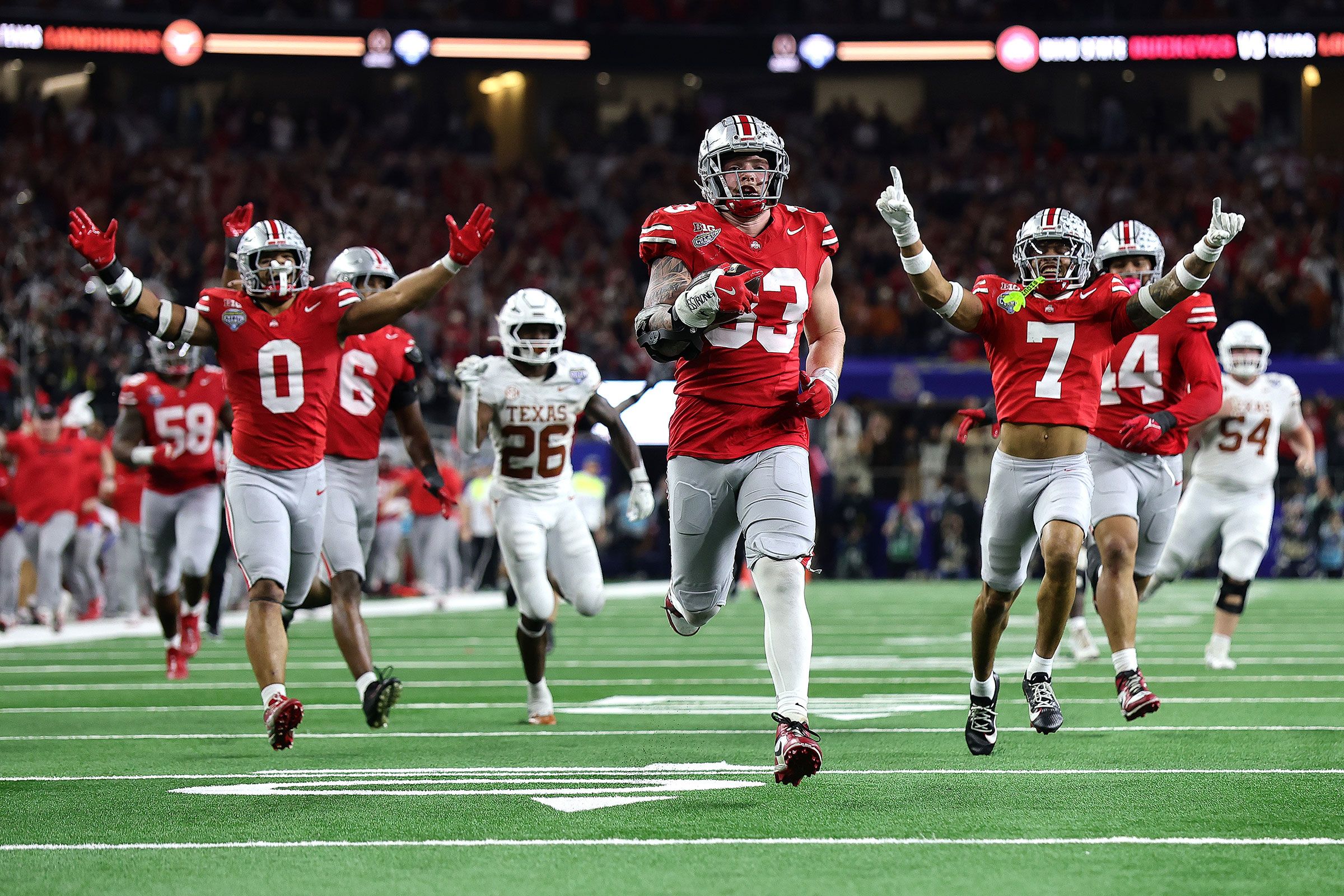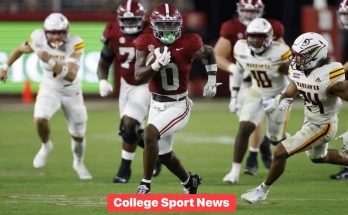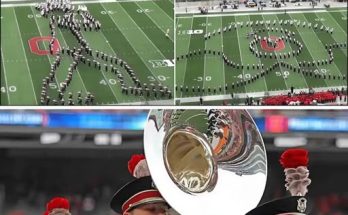One factor, driven by an unexpected source, will determine Ohio State’s quarterback competition in 2025.
Ohio State football has consistently been a powerhouse, and a significant reason for its success is the performance of its quarterbacks. From iconic figures like Troy Smith, Terrelle Pryor, and Dwayne Haskins to more recent stars like Justin Fields and CJ Stroud, Ohio State has been a perennial contender largely because of its quarterbacks.
As the Buckeyes look ahead to the 2025 season, the quarterback competition will be one of the most anticipated storylines. Ohio State has developed a reputation for churning out high-caliber quarterbacks, and the program’s continued success hinges, in large part, on the development and performance of the next great signal-caller.
However, one factor that could play a pivotal role in determining who takes the reins at quarterback may come from an unexpected source—the rise of the transfer portal and NIL (Name, Image, and Likeness) deals. While traditionally, the decision on the starting quarterback would have been based primarily on on-field performance, development, and coaching staff evaluations, the intersection of the transfer portal and NIL has introduced a new layer of complexity to the process. These two factors could ultimately determine who leads the Buckeyes in 2025.
The Transfer Portal’s Influence
The transfer portal has drastically changed the landscape of college football. It allows players to transfer to different programs with fewer restrictions, which has led to an increase in roster turnover, particularly in positions like quarterback. Ohio State, like many other top-tier programs, could be heavily impacted by the portal as competition heats up at the quarterback position.
In the past, Ohio State’s quarterback room was often filled with highly-touted recruits and a sense of long-term commitment to the program. Players would typically stay for several years, and the competition would unfold over time, often with a backup quarterback biding their time before eventually taking over. However, with the rise of the transfer portal, players are no longer as willing to sit on the bench for extended periods, leading to increased competition for starting jobs. This is especially true for a program like Ohio State, which has become a frequent landing spot for elite quarterbacks looking for playing time.
For 2025, Ohio State might find themselves in a situation where they have a blend of talented players already on the roster, as well as potential transfer quarterbacks looking to make an immediate impact. The ability to land a proven quarterback from the transfer portal could alter the competition significantly.
For instance, if an experienced quarterback who has already proven themselves at another program enters the portal, Ohio State could decide to bring in that player to compete for the starting role, thus making the internal competition more complex. This situation could throw off any previous assumptions about who the favorite might be. A highly experienced transfer quarterback could offer an immediate upgrade to the position, putting pressure on younger, less experienced players.
On the flip side, if Ohio State has a highly-ranked recruit coming into the program who decides to transfer after realizing that he won’t start right away, it could disrupt the development of the other quarterbacks in the competition. For programs like Ohio State, which consistently attract top-tier talent, the portal is a double-edged sword— it could help them land a difference-maker, but it could also lead to the departure of players who feel that their path to the starting role is blocked.
Moreover, the rise of the transfer portal has made it possible for schools to build more immediate, short-term depth at quarterback, allowing for quicker adjustments to the team’s needs. In the context of Ohio State, this means that their competition for the 2025 starting quarterback could be influenced by which high-profile quarterback decides to enter the portal and which quarterbacks remain committed to the program. With so many moving pieces, it’s possible that Ohio State will be faced with a competition that includes a mix of both returning talent and incoming transfers, making it difficult to predict who will emerge as the starting quarterback.
NIL Deals and Marketability
In addition to the transfer portal, another key factor in Ohio State’s quarterback competition in 2025 will be the role of NIL deals—which was introduced by the NCAA to allow athletes to profit from their name, image, and likeness. The advent of NIL has drastically changed the recruitment and retention strategies for college programs, particularly at the quarterback position.
At a program like Ohio State, the value of an elite quarterback extends far beyond the football field. Quarterbacks, particularly those at blue-chip programs, often become the face of the program and the university. NIL deals allow athletes to monetize their personal brand, sign endorsement deals, and receive compensation for their marketability. This has led to increased competition not just on the field, but in the business side of college football.
In 2025, NIL could play a crucial role in determining who becomes the starting quarterback for Ohio State. For instance, if a highly-coveted quarterback is considering multiple schools, the size of the NIL package and the opportunities available through the program’s partnerships with businesses and local sponsors could factor into their decision to transfer or sign with Ohio State. Quarterbacks are among the highest-earning athletes when it comes to NIL deals, and the most marketable players could be given more influence when it comes to the starting job.
While Ohio State has historically recruited top talent, the introduction of NIL gives schools with a robust business network an edge in attracting high-profile quarterbacks. If a transfer quarterback or incoming recruit sees that Ohio State can offer significant NIL opportunities, it could give them a considerable advantage over the current quarterbacks vying for the starting job. Programs with the best NIL packages are likely to have an advantage in recruiting, which could lead to even more competition in the quarterback room. A player with a larger NIL potential could sway the coaching staff’s decision, especially if that player can generate substantial revenue and publicity for the program.
Furthermore, quarterbacks who have strong connections to the business and marketing world will not only bring in attention for themselves but will also boost Ohio State’s overall brand. This potential for financial success and marketability could become a driving factor for coaching decisions.
Cultural Shifts in College Football
The evolution of the transfer portal and NIL is part of a broader shift in the culture of college football. These changes represent a more professionalized approach to the sport, where players are no longer just athletes but are also brands and commodities with market value. For Ohio State, which has long been at the forefront of college football’s elite programs, adapting to this new reality will be crucial for continued success.
The coaching staff, led by head coach Ryan Day, will need to navigate the changing dynamics between player development, on-field performance, and the increasingly important off-field elements of college football. Coaches must not only evaluate their quarterbacks on their athletic abilities and leadership qualities but also consider their brand potential and how they can fit into the larger program culture.
Ultimately, Ohio State’s coaching staff will need to find the right balance between rewarding performance on the field and managing the business aspects that come with NIL. A quarterback’s ability to represent the program off the field could become as crucial as their ability to throw a touchdown pass on the field. As a result, the competition for the 2025 starting quarterback could be driven, in part, by the external pressure and opportunities that come with NIL.
The Impact of the Transfer Portal and NIL
Looking ahead to 2025, Ohio State’s quarterback competition could be dramatically influenced by two major forces—the transfer portal and NIL deals. These factors have altered the traditional model of how teams select their quarterbacks and have introduced new complexities to the decision-making process.
Ohio State, as a program that consistently recruits high-level talent and competes for national championships, will likely find itself in a unique position in 2025. The introduction of the transfer portal allows them to bring in proven talent from other programs, which could disrupt the internal competition. Additionally, the role of NIL will likely play a significant part in the quarterback battle, as it opens up new avenues for recruiting and incentivizing players.
While on-field performance will always remain important, the decisions regarding Ohio State’s quarterback depth chart could be influenced by factors off the field that were once secondary. In the era of the transfer portal and NIL, the battle for the starting quarterback position could very well be driven by a combination of player development, marketability, and external competition from incoming transfers.
As college football continues to evolve, it will be fascinating to see how these new dynamics unfold at Ohio State and how the coaching staff adapts to this changing landscape. Whether the next starting quarterback for Ohio State comes from within the current roster or is an incoming transfer, one thing is clear: The quarterback competition in 2025 will be unlike any we’ve seen before.



